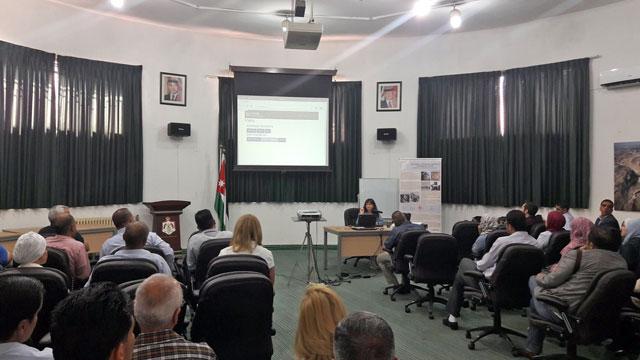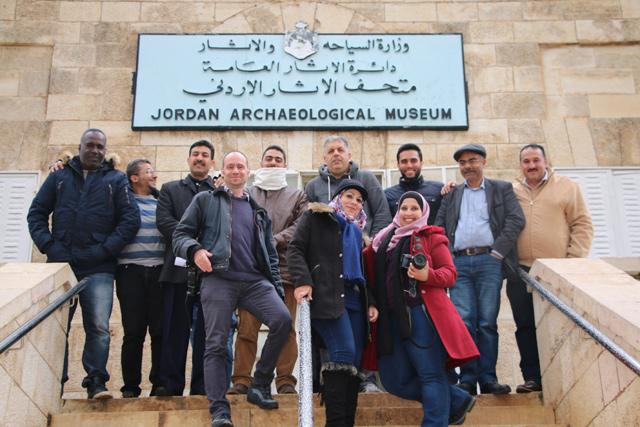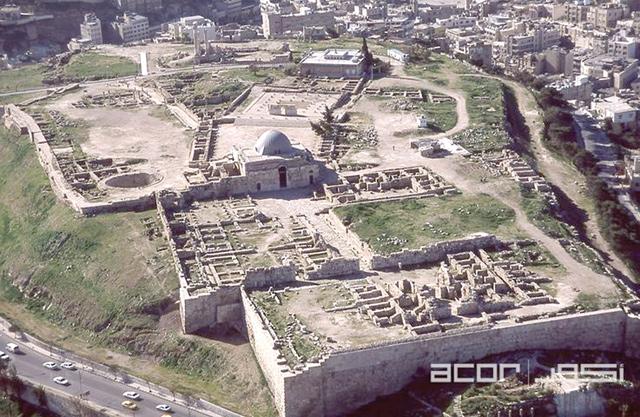You are here
Heritage stakeholders join forces to preserve archaeological artifacts
By Saeb Rawashdeh - May 11,2017 - Last updated at May 11,2017
AMMAN — With the aim of preserving archaeological artifacts at the Jordan Archaeological Museum located at the Amman Citadel, the German Protestant Institute of Archaeology (GPIA), the Department of Antiquities (DoA) and the Gerda Henkel Foundation (GHF) joined forces in the project “Protection of Cultural Heritage in Jordan”, according to stakeholders.
In January this year, the four-year project was finalised between the GPIA, the DoA and the GHF, with the later providing the funding for the project.
The official launching was marked on Monday at GPIA in the presence of Minister of Culture Nabih Shuqum, representatives of these institutions, and scholars.
DoA Director Munthir Jimhawi at the time noted that “dissemination of ideas” between Jordanian and international institutions is vital to overcome numerous hurdles.
Jimhawi cited that Jordan has around 1,000 000 archaeological sites while archaeological surveys and excavations produced millions of finds.
“Facing these problems, the DoA recently founded the initiative for the management and protection of museum inventories in Jordan, in cooperation with the GPIA and the GHF,” said Jutta Haser, the project manager at the GPIA.
The current political instability in the region, which affects cultural heritage in general, “makes risk management and evacuation plans of the utmost importance”, the scholar emphasised.
She underlined the three main objectives of the project: management of the museum facilities and documentation of finds, establishment of a risk-preparedness plan and training for the DoA staff.
The Jordan Archaeological Museum at the Amman Citadel will serve as a pilot model, the scholar continued, stressing that the project will be conducted through digitisation and inventory of objects “as well as the installation of cameras and both internal and external alarm systems”.
The Jordan Archaeological Museum was the sole institution dealing with these objects before the opening of The Jordan Museum in 2013, Haser continued, adding that the archaeological museum has a large collection of artifacts, approximately 2,000 on display and 7,000-8,000 stored.
“Furthermore, the collection encompasses a diversity of archaeological objects, such as pottery vessels, worked stone with either inscriptions or decorative elements, flint tools, glass vessels, metal objects and objects which range from the Paleolithic Period to modern times,” she highlighted.
In the meantime, before the new registration, it is necessary to empty stores and renovate them, the expert pointed out.
“Additionally, design for the computerised database has already started,” she underlined, noting that attention will be given not only to international standards relating to archaeology, but also to the requirements of Interpol”.
The database will be structured into five main divisions: data for use by the museum — registration number and storage location— acquisition data, provenance, description of the object and data for all required details if the object is on loan to another institution.
The poor state of some artifacts at the museum requires the work of the conservator, who will restore selected objects and assist in setting up preventive measures for future protection of finds, Haser clarified.
The risk management plan is another vital aspect of the project and includes action strategies in cases of emergency. It will be carried out in cooperation with international institutions, including UNESCO and the International Council on Monuments and Sites, she underscored.
“However, it must be emphasised that recording archaeological objects in this risky context is one of the most important tasks and must be completed as soon as possible,” noted Haser. Without detailed documentation, which identifies each object as a unique entity, legal possession of an archaeological object cannot be categorically determined in cases of looting or illicit trafficking.”
Such documentation can provide information even if the object is irrecoverably lost, the expert explained.
Another major focus is the provision of training for the DoA staff regarding the documentation process, she said.
“This is extremely important as, once the collaborative project is completed, the process will be applied to all archaeological museums in Jordan under the responsibility of the DoA, and performed by local museum staff,” concluded Haser.
Related Articles
AMMAN — Regional crises and illicit trafficking necessitated a large archaeological inventory for Jordanian museums, said a German arch
AMMAN — A good background in photography can be more important than a classical archaeological education when taking photos of archaeologica
AMMAN — A four-year project aims to document and share the current collection of objects at the Jordan Archaeological Museum (JAM), which re
















